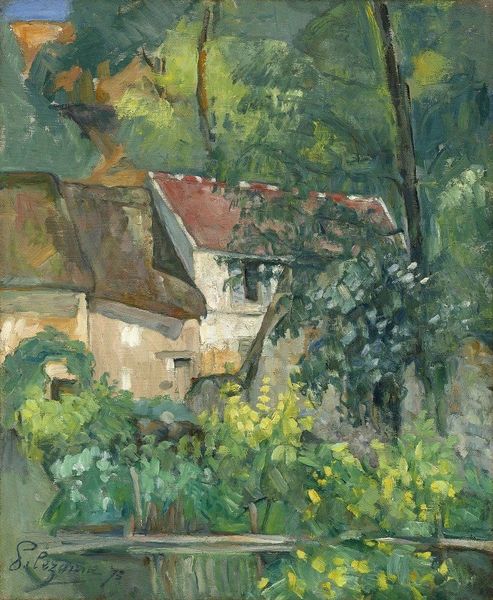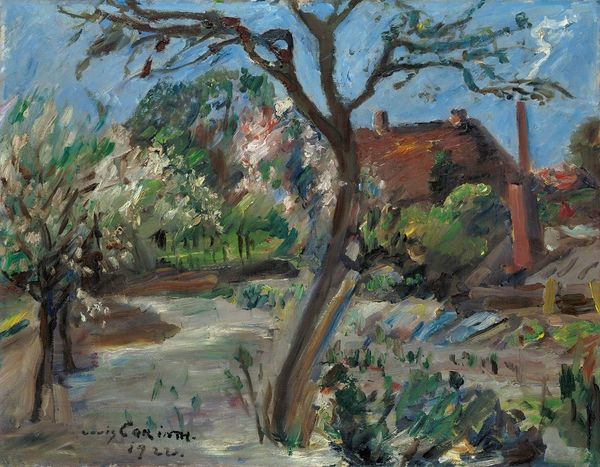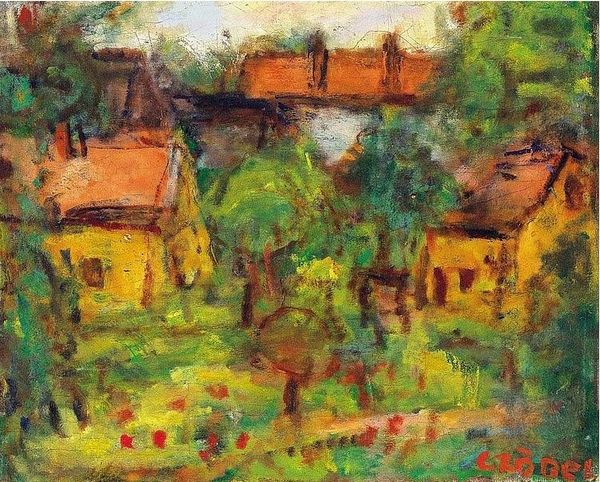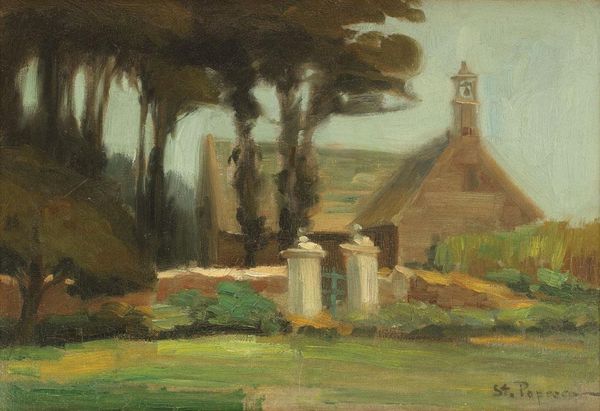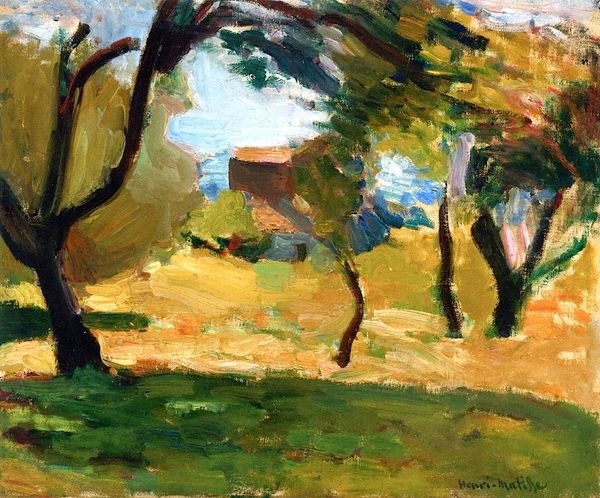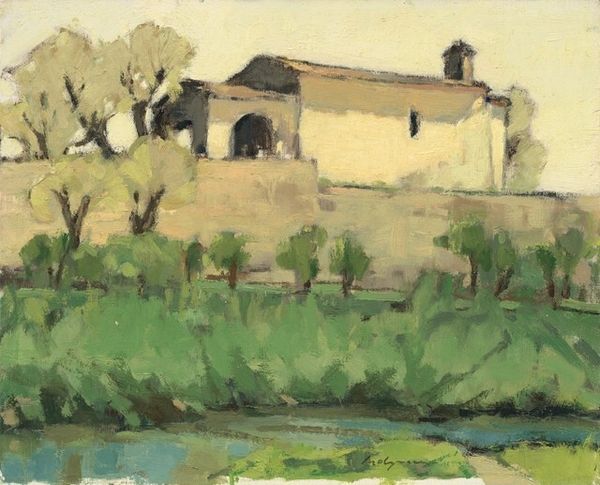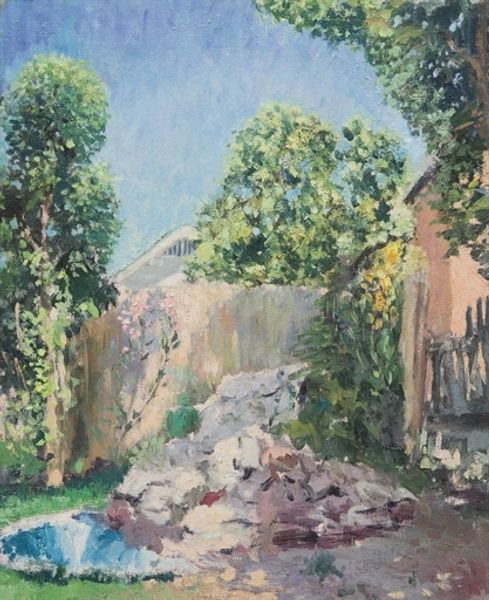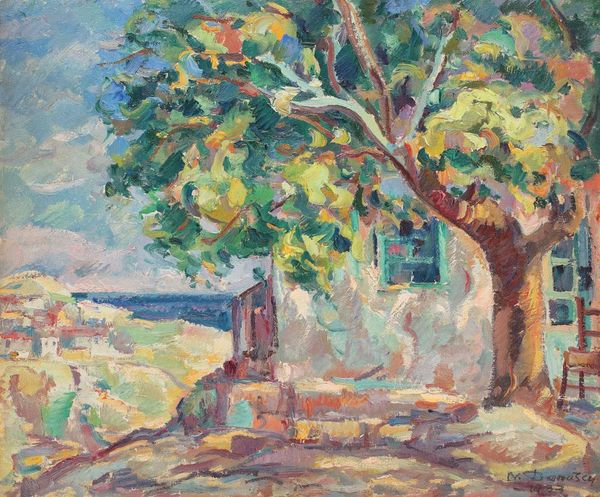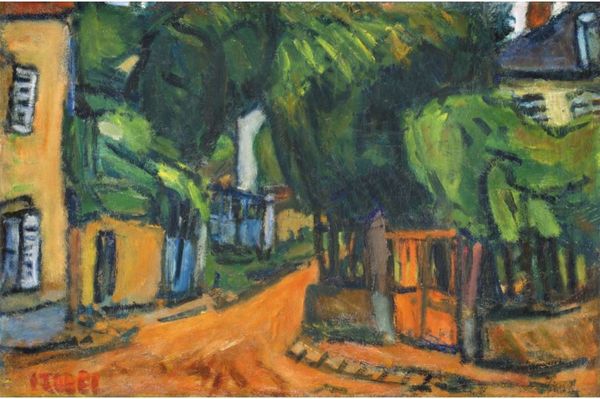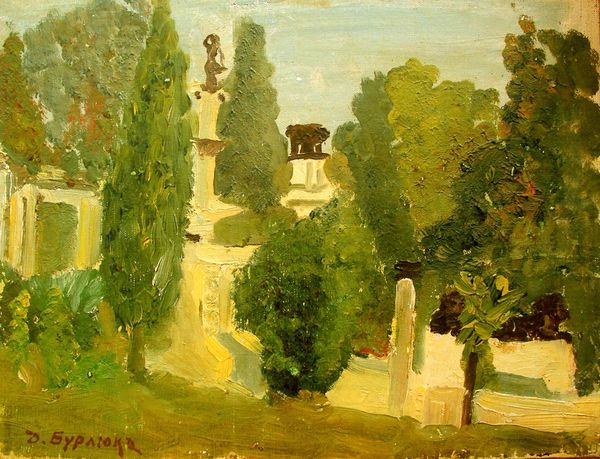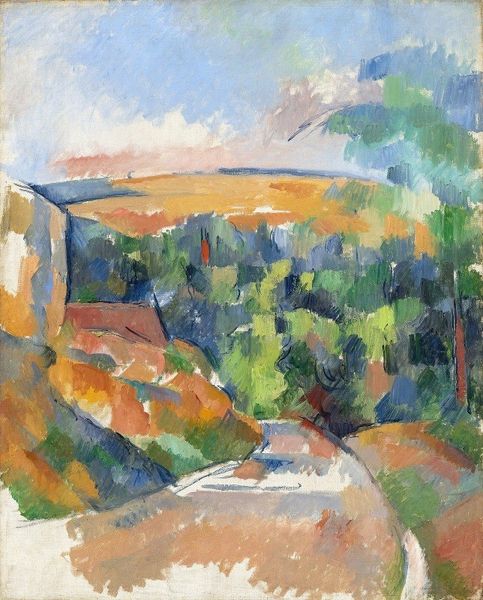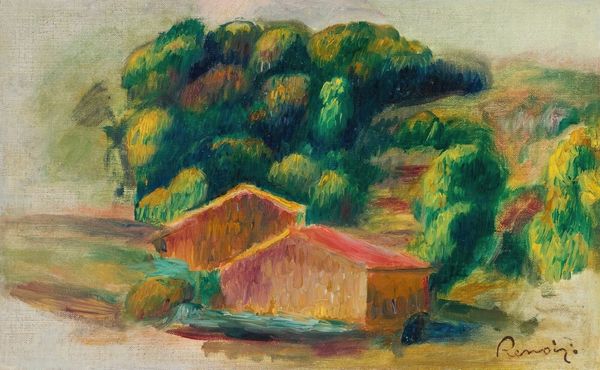
Copyright: Public domain
Editor: So, here we have Vasile Popescu's "Garden in Călimănești" from 1942, an oil painting done *en plein air*. I'm really struck by how the building almost disappears into the greenery. What catches your eye? Curator: The texture, without a doubt. Look closely. This wasn’t simply observed; it was constructed. The visible brushstrokes aren’t just representational; they reveal the very labor of applying paint. Think about the availability of materials in 1942, during wartime. Editor: You mean the sourcing of the oil paints themselves? Was that significant? Curator: Precisely! Consider the linseed oil, the pigments – where did they come from, and at what cost? Popescu’s commitment to *plein air* in that context transforms the work. It becomes an act of dedication to a certain artistic process under considerable duress. He wasn't just painting a garden; he was asserting a particular kind of artistic production against the backdrop of war and potential scarcity. How does knowing this alter your perception? Editor: It definitely makes me see it as less of a simple landscape and more of an active… almost defiant… construction. Curator: Defiant in its celebration of readily available, even mundane, natural materials and persistent craftsmanship! Now, does the blurred building offer an opinion in times of political tensions? Does it represent abandonment, isolation, maybe reflection? Editor: That’s a great way to think about it. It highlights how much the social conditions of making affect the meaning. Curator: Absolutely. Considering process, materials, and social context is key. Editor: Thanks; I'll definitely carry that with me!
Comments
No comments
Be the first to comment and join the conversation on the ultimate creative platform.
